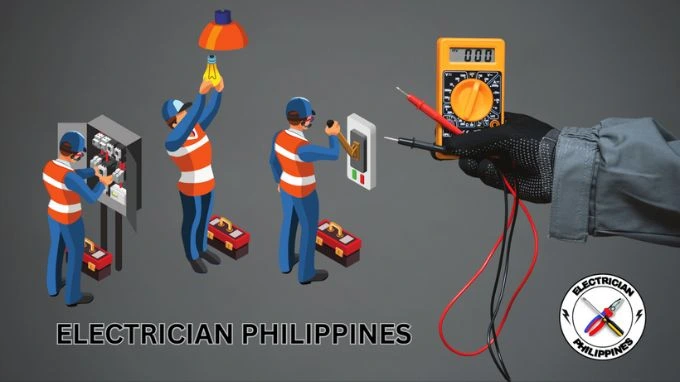Top Tips for Effective Electric System Troubleshooting
Fixing electrical systems needs a methodical technique, grounded in a thorough understanding of electrical concepts and safety procedures. By familiarizing oneself with circuit parts, utilizing essential devices, and adhering to an organized assessment approach, experts can properly determine and settle issues. Nonetheless, the subtleties of reliable fixing expand past mere technological understanding; understanding just how to record findings and focus on security can considerably affect results. As we explore these essential elements even more, it comes to be clear that mastering this process is not just beneficial yet essential for success in the field.
Understand the Basics
Comprehending the essentials of electrical systems is important for effective troubleshooting, as a solid structure permits professionals to detect and resolve issues more effectively. An extensive understanding of electric concepts, such as voltage, existing, resistance, and power, is crucial in determining the origin of problems. Voltage is the electric possible distinction that drives present via a circuit, while resistance opposes the circulation of existing, influencing the total capability of the system.
Experience with circuit components, including resistors, capacitors, diodes, and switches over, is additionally vital. Each component plays a distinctive function in circuit actions and can affect performance when malfunctioning. Furthermore, understanding collection and parallel circuit setups is essential, as these setups influence the distribution of voltage and present within the system.
Professionals must be aware of potential risks, such as shock and brief circuits, to carry out secure troubleshooting techniques. By mastering these foundational concepts, specialists improve their capability to perform reliable diagnostics and fixings, inevitably leading to boosted efficiency and integrity of electric systems (electrical system troubleshooting).
Gather Necessary Devices
Effective troubleshooting of electrical systems requires the appropriate collection of devices to identify and deal with concerns properly. Necessary tools include a multimeter, which gauges voltage, existing, and resistance, enabling for precise evaluations of electric elements.
Additionally, shielded hand devices such as screwdrivers, pliers, and wire strippers are crucial for safely controling electrical links. It is likewise a good idea to have a circuit tester on hand to confirm the presence of voltage in electrical outlets and cords. For more facility systems, a thermal imaging video camera can aid discover overheating components, suggesting possible failures.

Follow a Systematic Method
Having actually collected the appropriate tools, the next action in fixing electric systems is to adhere to a systematic method. A methodical technique makes certain that technicians can determine mistakes efficiently and precisely, decreasing downtime and preventing unnecessary repairs.
Begin by reviewing the system's schematic diagrams and specifications. This involves monitoring each element systematically, starting from the power resource and functioning towards the lots.
Make use of testing equipment, such as multimeters and oscilloscopes, to collect objective data concerning voltage, present, and resistance at various points within the system. This empirical evidence will certainly assist your troubleshooting initiatives and assist to confirm or get rid of potential sources of failing.
Additionally, take into consideration environmental factors that might influence the system's efficiency, such as temperature changes or moisture access. An extensive examination of electrical wiring, connections, and parts will make certain that all possibilities are made up.
File Your Findings
Complete documentation is necessary in the troubleshooting procedure of electric systems. Precise documents enhance the check this effectiveness of identifying persisting concerns and help with interaction among staff member. Each finding must be meticulously kept in mind, including signs observed, examinations conducted, and the end results of those tests. electrical system troubleshooting. This technique not only help in understanding the origin cause of the trouble but additionally works as a referral for future fixing initiatives.

In addition, keeping a log of components changed or repair work performed is important. This info sustains stock management and can help evaluate the longevity and reliability of particular elements.
Eventually, the documentation procedure need to be thorough yet succinct, allowing easy access and review - electrical system troubleshooting. By focusing on thorough paperwork, service technicians can produce a beneficial understanding base that not just aids in present troubleshooting but additionally empowers future upkeep efforts, consequently improving total system reliability

Prioritize Precaution
Identifying the fundamental threats associated with electric systems is crucial for making sure safety during troubleshooting. Electric shock, burns, and equipment damage are simply a few of the potential dangers that technicians deal with. Focusing on precaution is not just a legal responsibility yet likewise a moral necessary that safeguards both the specialist and the surrounding setting.
Before starting any troubleshooting job, technicians must don suitable individual protective tools (PPE), including shielded gloves, shatterproof glass, and flame-resistant clothing. Guaranteeing that the workspace is dry and devoid of clutter can substantially reduce the danger of accidents. Additionally, it is necessary to de-energize circuits prior to beginning any type company website of work, verifying that they are not endure the usage of a multimeter or voltage tester.
Establishing clear interaction procedures with staff member is also important; this guarantees that everyone recognizes potential risks and the condition of the electrical system being worked find out this here on. Having an emergency situation feedback strategy in location can prove important in the event of an incident. By prioritizing safety and security actions, professionals can successfully alleviate dangers and foster a much safer office.
Final Thought
Effective electric system repairing relies on a thorough understanding of fundamental principles and a systematic method. Focusing on safety and security measures makes sure the health of individuals involved and the stability of the electric system.
Comments on “Professional technical support for electrical industry progress.”